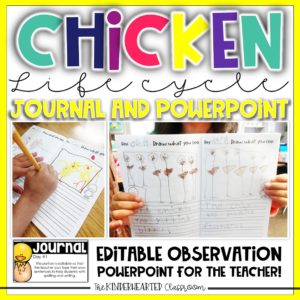We love sharing our favorite resources, books, classroom supplies and teacher stuff with you. When we do, we may earn money or products from the companies mentioned in this post. This does not affect our choices in what to recommend. Rest assured, we only recommend our favorite products to you! You can find our full advertising policy on the Partner With Elizabeth page.
Hatching eggs in the classroom is the perfect way to bring the life cycle concept to life for your students. But this isn’t a science experiment that happens in just a day or two. It’s a long process that can last 3-4 weeks. But don’t let that deter you. Instead, let this interactive life cycle science journal help you and your students practice the important science skills of making observations, collecting data and drawing conclusions.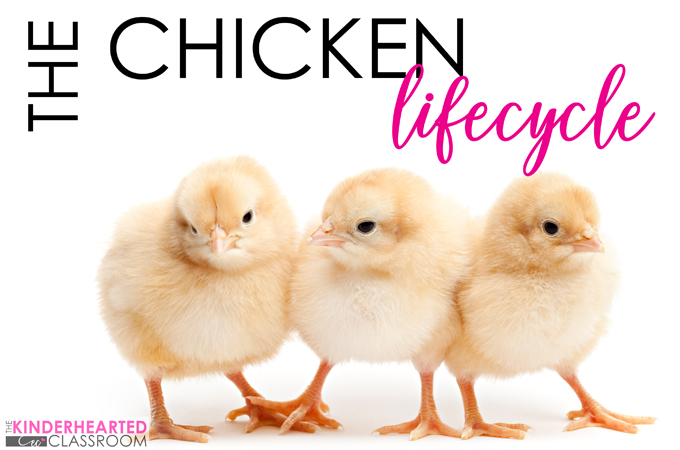
This is one of my favorite activities of the school year. In fact, I had never hatched eggs before until I first did it in my classroom. (So, if you are thinking “I can’t do this” please reconsider. You can and it is amazing!)
Getting Started
To prepare for hatching eggs, there are a couple of things you need. You will need fertile eggs and an incubator. You will also need a large box and a brooder (a safe heat source for the new chicks) along with some food for the new babies. You can often connect with your county 4H organization, a local university for help getting started. But even if you don’t have support you can still find everything you need for this wonderful science lesson at your local pet store or even Amazon. Check out this amazing resource from Texas A&M education that gives you detailed instructions for hatching in the classroom.
Interactive Science Journal
Document the entire life cycle and egg hatching process with an interactive science journal. Starting from the first days, your students will be so excited. But it can be hard for our excited students to understand that the chicks won’t be there tomorrow. In fact, 21 days can seem like an eternity for them. So the science journal begins with an egg hatching countdown. This may not make the passage of time easier, but it does help them understand the process a little more.
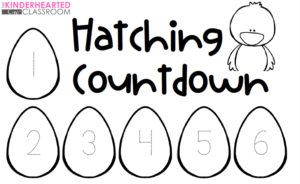
During this time students can learn about making a hypothesis. They will have a place to write their guess or expectation for this life cycle activity. There are also opportunities to get a glimpse inside the eggs with ‘candling.’ Using a flashlight, you can show the students inside the egg. They will be able to see a shadow if the baby chick did indeed fertilize and start growing. Unfortunately, there will probably be some eggs with no shadow. This is a great time to talk about the ‘not so happy’ side of the life cycle. Students can begin documenting their observations in their science journal with the ‘candling’ activity.
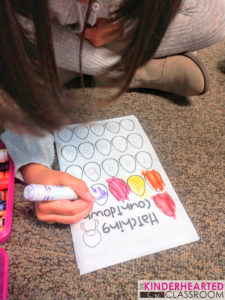
Hatching Day
When day 20 or 21 arrives the anticipation really starts building! The eggs will be hatching and there is a definite buzz of excitement in the air. One of my teacher friends, Amy from Teaching in Blue Jeans, used the iPad camera connected to her classroom projector to live stream the eggs hatching. This gave everyone an up close view. Here’s a little glimpse from their hatching day!
Life Cycle Observations
During the hatching process and after it is time to really hone in on the skill of making observations. Students will use their interactive science journal to draw and write about their observations. This can include anything from the unhatched eggs, to the growing chicks. You will be amazed at all the changes that happen with these little chicks in just a couple of days.
You can customize the number of days you want to include in your journal. I suggest making observations a couple of times before hatching day (there won’t be much visible change), documenting the ‘candling’ activity if you do it, and then documenting each day that the chicks are in your classroom from hatching day on. This was about a week for us.
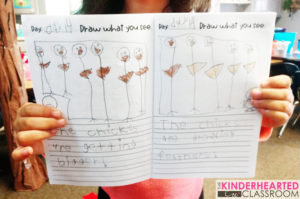
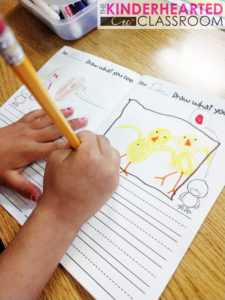
This interactive science journal will give your students a wonderful opportunity to connect their writing skills to science. Whether they are just learning to label pictures or writing sentences this science journal is a great cross-curricular activity.
You can find the interactive Chicken Life Cycle science journal in the Kinderhearted Classroom Shop or on Teachers Pay Teachers.
Want to know all about my classroom hatching activity, here’s a video I did that gives you all the details!
